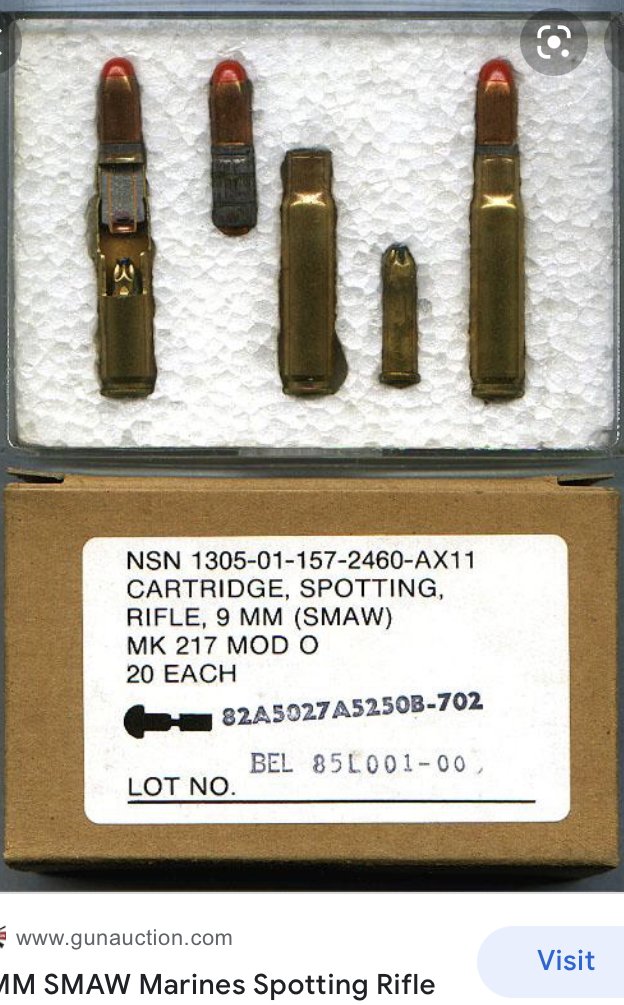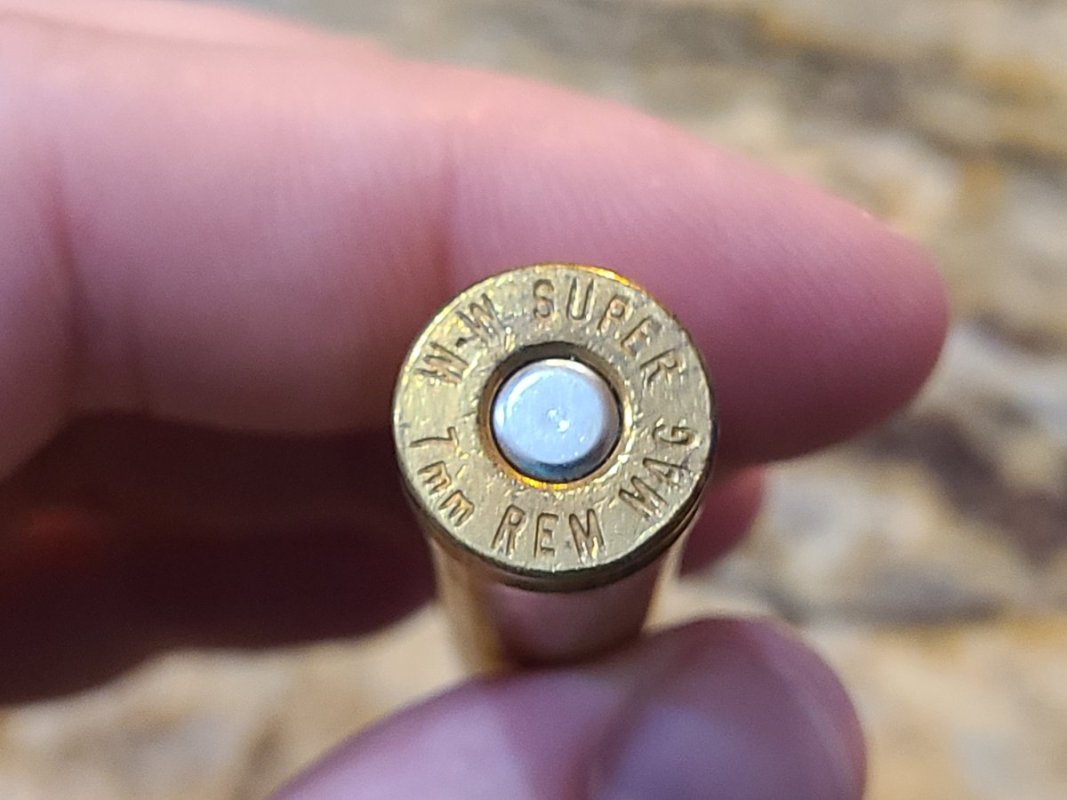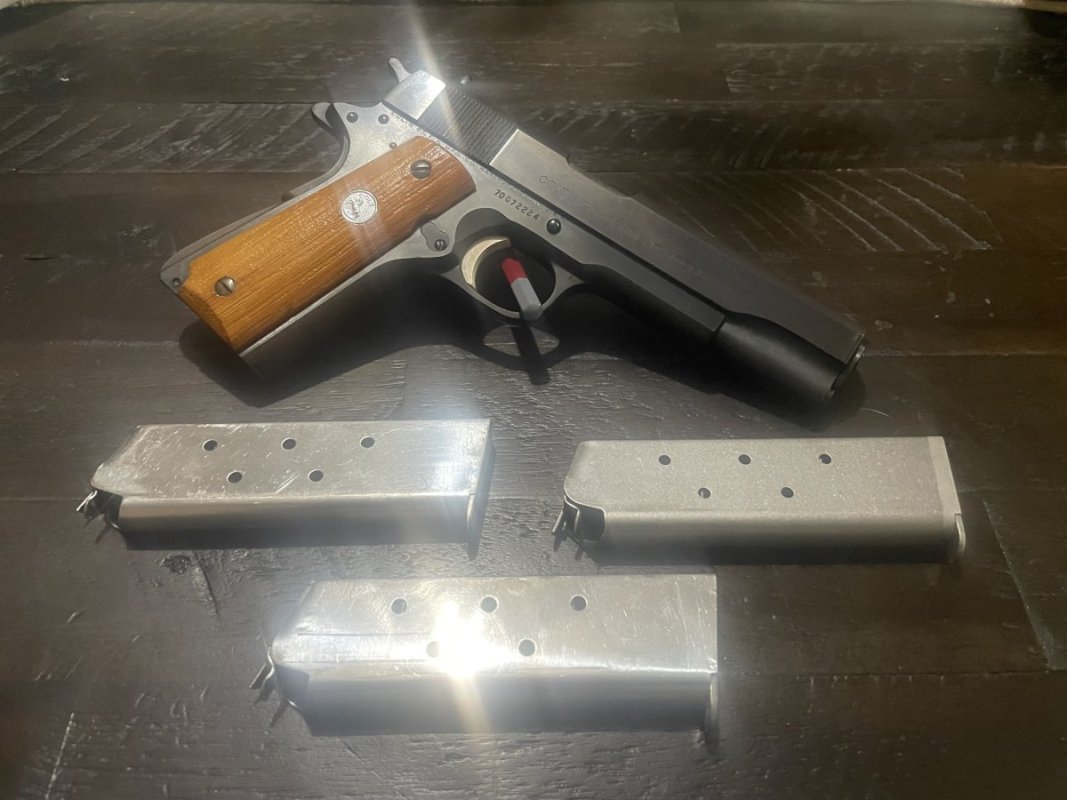My guess:
An early 20th century military tracer cartridge,
but not for a rifle or light machinegun, but rather a heavy MG like a .50 BMG or 12.7 mm,
or even a 20mm cannon.
I have nothing to use as a size reference, but the fact that it's got a blank pistol-sized blank round INSIDE the larger case makes me think it's .50 cal or maybe 20mm x about 110 mm in size.
The bullet / projectile is extra heavy, if the core is made of lead.
Having an extra heavy projectile would explain why the propellant charge is contained in a sub-caliber blank cartridge; every heavy bullets need much smaller powder charges to avoid exceeding limits on chamber pressure. Yet if they put a small amount of gunpowder in that big fat 20mm cannon case, it would either be dangerous or have unreliable ignition, since the powder charge wouldn't necessarily be sitting atop the percussion primer.
The bullet / projectile seems to be a tracer type. It looks like it has a lot of tracer compound for a long burn time.
The bullet's large size, its blunt, round nose, and presumably heavy weight makes me think it was meant to be a slow round that needed a long-duration trace to make it to the target while burning.
SO, what was it used for?
MY GUESS: To be fired at Zepplins / airships / barrage balloons that would be filled with hydrogen.
The slow velocity of the bullet would increase the chances of the tracing compound catching the interior of the airship on fire.







